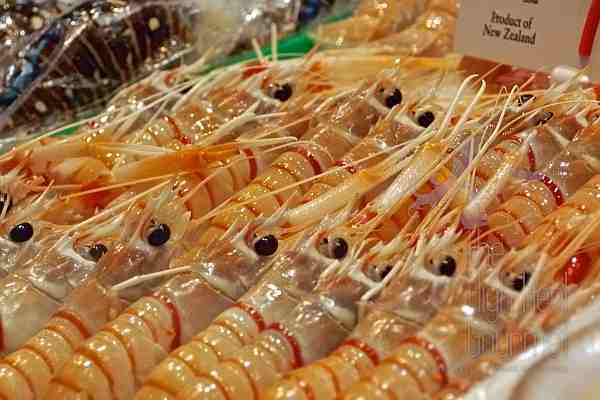Published on the 11/04/2018 | Written by Jonathan Cotton

Clever tech is changing the way Australasia catches, monitors and markets its seafood…
With three million visitors a year, it’s a good thing the iconic Sydney Fish Market has developed a way to manage the mess – and it’s just one of the ways smart new IoT sensor tech is revolutionising the industry on multiple levels.
“The IoT solution that we have tried to solve here came about through doing a bit of a workshop on how do we improve the customer experience,” says Bryan Skepper, General Manager, Sydney Fish Market.
“So we were looking at it and thought: ‘How can we monitor the waste loads on the site, in the bins and so on?’ Because we have a system whereby we have cleaners operating, emptying bins on schedules, and sometimes they empty them early and sometimes they empty them late.”
The answer was a monitoring system from IoT startup Meshed. Bins throughout the market have been equipped with sensors designed to collect a variety of data sets: An ultrasonic sensor monitors the fill rate of the bin, a second collects the internal bin and ambient temperature and a third – an accelerometer – checks the position of the bin (to alert cleaners if it’s been knocked over).
That information is then overlaid with other relevant data – weather conditions, day of the week and more – to provide a detailed picture of how the waste is being managed at the market and allow patterns to be recognised and acted upon.
“There is almost an endless opportunity to use this live monitoring of services, energy, water, to improve the level of service delivery to customers,” says Skepper. “In our case, it is the consumer, but also it is our tenants, our tenants’ staff and our fishermen as well, so it is quite exciting.”
“There is almost an endless opportunity [in] services, energy, water, to improve the level of service delivery to customers.”
In New Zealand there are currently plans to gut and rebuild the Auckland Fish Market – hopefully those plans will include customer-centric tech to make the market more appealing to consumers and the curious alike. IoT tech may already be revolutionising the traditionally low-fi New Zealand industry however.
Last year Māori–owned fisheries company Moana New Zealand used industrial IoT monitoring to increase Paua yields and provide operators with real-time information on growing conditions.
Previously the company had lost valuable stock in Northland due to an unexpected heat wave – Paua are sensitive to seawater temperatures, requiring between 17.5˚ to 18˚C to grow well. With sensors in place the company installed a heat pump system to control the temperature of the seawater to the broodstock pāua tanks, mediating external temperature fluctuations and keeping things at a steady 17.5˚C, encouraging growth, providing instant feedback and streamlining maintenance.
Hopes are high that IoT tech may go a long way to achieving long-term sustainability for the industry, and with myriad applications that may not be far from reality.
IoT may even help New Zealand clean up it’s problematic waterways. Last year the government set a new target to have 90 percent of New Zealand’s lakes and rivers reach swimmable water quality standards by 2040 (currently only around 72 percent meet the standard).
New Zealand IoT Alliance executive director Kriv Naicker says IoT sensors, data analytics and automation may be the solution to reaching such targets.
“New Zealand can quickly learn from other nations and use sensors to monitor water quality, water levels, nutrient flows and other metrics, analytics to quickly understand what is happening where on the farm and automation and robotics to adjust delivery of nutrients and water to reduce impact on waterways.”
The ability to remotely track, monitor and report on the condition of a herd of cows or flock of sheep or quality of water introduces huge efficiencies for the modern farmer, says Naicker: “They can be alerted to various scenarios in advance and save both time and money by not having to patrol and survey, using satellite technology to receive various information in a proactive fashion.”
“Some good examples of companies providing sensors for the quality of lakes and rivers includes Riverwatch Water Tester in the Wairarapa, Waterforce in Canterbury and KotahiNet in Wellington.”
“In addition, Spark, Vodafone, and Thinxtra and Kordia are rolling out IoT water management solutions,” he says.



























